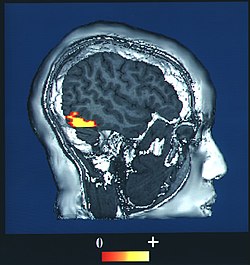I heard a podcast the other day that I thought was fascinating, although I’m not sure I totally understood it all. But I’ll do my best to pass it on to you.

There is a part of the human brain that is apparently specialized to recognize human faces. It is called the fusiform face area, abbreviated FFA. The human FFA was first described by Justine Sergent in 1992 and later named by Nancy Kanwisher in 1997. While it is generally agreed that the FFA responds more to faces than to most other categories, there is debate about whether the FFA is uniquely dedicated to face processing, or whether it participates in the processing of other objects. In other words, has this particular part of the brain evolved just to recognize faces?
Other researchers such as Isabel Gauthier say that the FFA is simply a part of the brain that is specialized to distinguish between similar objects. Evidence for this came from MRIs that were used to test the brain responses of birdwatchers who showed some activation of the FFA. And not only bird watchers, but auto identification experts, x-ray readers, and chess experts.
What does this mean? Well, most people identifying birds (or cars, or dogs), use a piecemeal identification scheme. That is, if they see a bird, they might say it had a short tail, was sort of brownish, and was on the ground.That doesn’t say much. But if more pieces are added such as facial stripes, wingbars, and a spot on the breast, eventually an identification can be made. But the expert, or at least experienced, birdwatcher can identify birds faster by “giss”, sometimes called “jizz”, and standing for general impression of size and shape. We are all experts as identifying friends, relatives, coworkers, and famous people and we do it naturally without identifying them piecemeal, we do it by giss. But if you are just getting to know someone you have rarely seen, you might do it first by their eyes, hairdo, nose, or height, whatever is most obvious to you.
So learning birds is similar to the way in which we learned to recognize other people – get a lot of experience and you will move from a piecemeal method to a jizz method and identify birds faster. Gauthier and her colleagues have also found that people who are better at learning to recognize one subject should also be better at learning another and that those who did a better job at identifying objects in which they were most interested were also better at identifying faces.
These references and a more detailed explanation of the FFA can be found here at Wikipedia.
There is also an interesting article on facial recognition technology to identify individual birds that you may want to peruse.
And most interesting is that researchers at the University of London have discovered that birds can recognize human faces. So it is not enough that our faces and private information are spread all over the world via social media and commercial sites we buy our stuff from; now even pigeons know who we are!